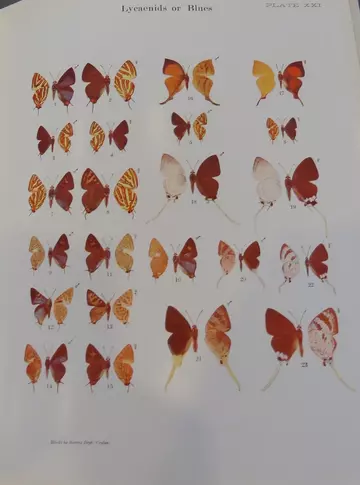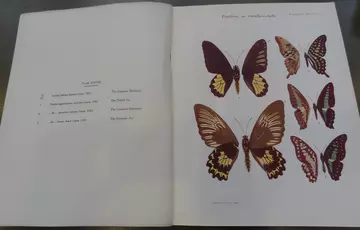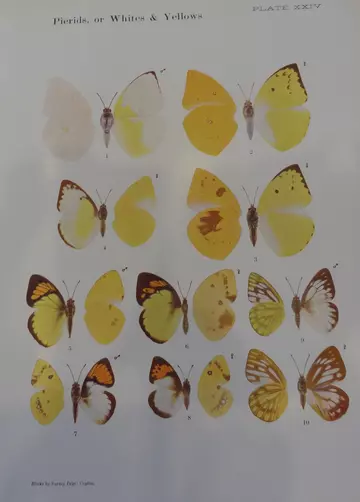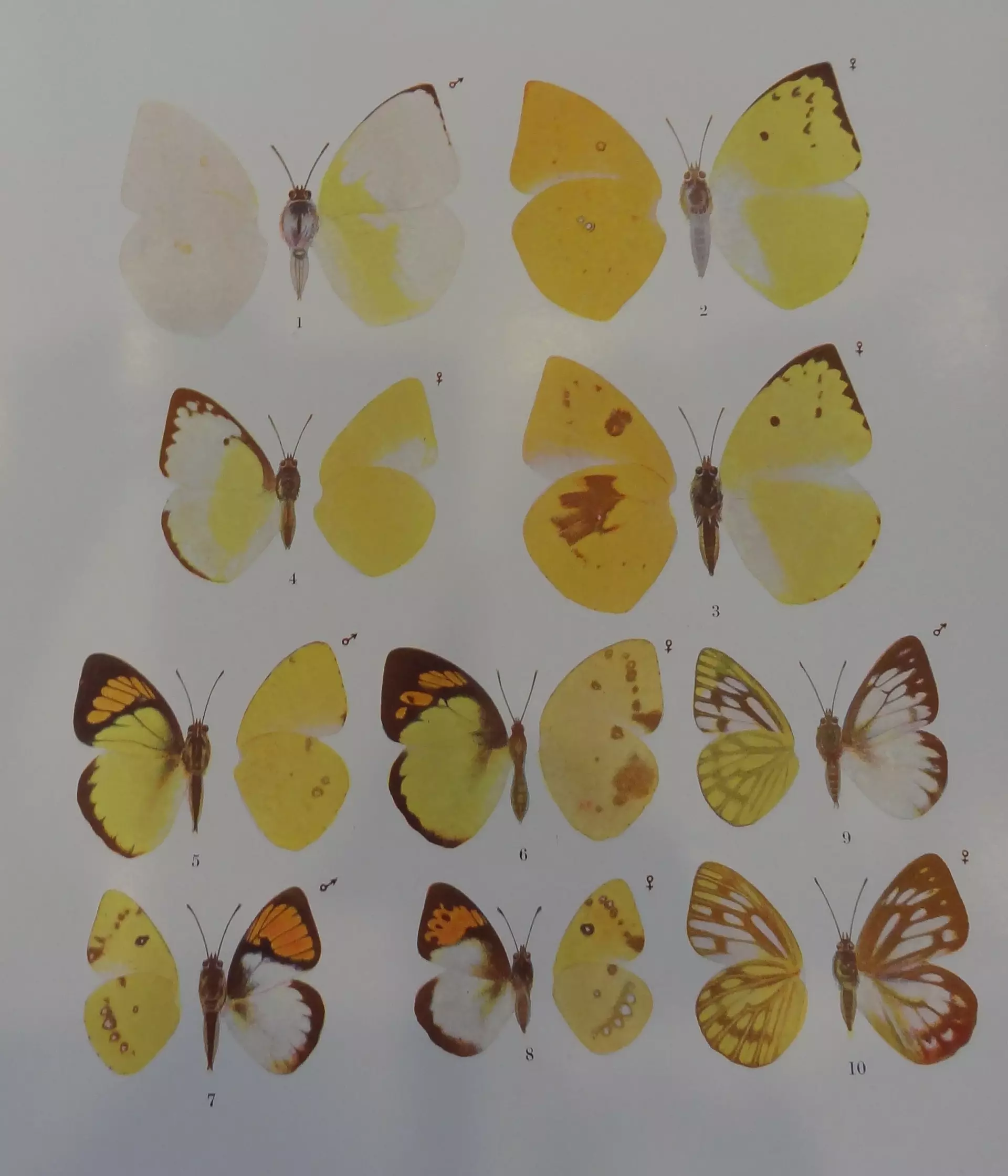
Ann Sylph, MSc, MCLIP
ZSL Librarian
What is Lepidochromy?
A few weeks ago I came across a word new to me - ‘Lepidochromy’, a term I had simply not come across in my career. It is a technique of ‘nature-printing’, using the imprint of butterfly or moth wings.
Nature-printing of butterflies and moths
So how did I become aware of this word? You may have seen in the press that some rare books were stolen in 2017 in ‘a daring heist’ ‘Mission Impossible-style theft’ from a warehouse in Feltham, near Heathow. The books had been recovered in Romania and have now been restored to their owners. But four books have yet not been recovered, one of these was a volume of pressed butterflies (Brown and Giuffreda, 2020).

As well as being Librarian at ZSL, I am Secretary of the Society for the History of Natural History. One of our Honorary Members, Charles Nelson, got in touch with me about the still missing volume of butterflies suggesting a tweet. I did a tweet for the Society for the History of Natural History and decided to post a note about the volume on an online discussion list hist-nat-hist, there was an amazing response and so much interest in lepidochromy or nature-printing of butterflies and moths. A ZSL Fellow, Roger Wotton, then contacted me referring to a blog he had written on the subject.

Becoming more and more interested in lepidochromy, I began to read about the subject and looked in our online catalogue to see if we had any such volumes in ZSL’s collections. Disappointingly we did not have any mentioned in the discussion on hist-nat-hist or the volumes mentioned by Roger in his blog.

I found a paper from 1968 by Lt.-Col. C.G. Cowan on ‘Butterfly-wing prints’ published in Journal of the Society for the Bibliography of Natural History, in which he wrote about the ‘Butterfly fauna of Ceylon’ (now Sri Lanka) by L.G.O. Woodhouse. Excitingly we have three editions of this book in ZSL Library, the 1st edition, a 2nd edition and an abridged 2nd edition! According to Cowan 96% of the colour illustrations “of all species from the island were produced from scale transfers from the wings of actual specimens, the bodies and antennae having been drawn in”.
References and further reading
Mark Brown and Angela Giuffrida (2020). Rare stolen books, including works by Newton and Galileo, returned to owners: Books worth more than £2.5m found in Romania after Mission Impossible-style theft. The Guardian, 10 November 2020.
C.F. Cowan (1968). Butterfly-wing prints. Journal of the Society for the Bibliography of Natural History, Vol. 4 (7), pp. 368-9.
L.G.O. Woodhouse and G.M.R. Henry (1942). Butterfly fauna of Ceylon. Colombo : Ceylon Government Press. 7QU/QK
L.G.O. Woodhouse ([1949]). Butterfly fauna of Ceylon. 2nd complete edition, Colombo : Colombo Apothecaries. QU/QK
L.G.O. Woodhouse ([1950]). Butterfly fauna of Ceylon. 2nd abridged edition, Colombo : Ceylon Government Press. QU/QK
Roger Wotton (2013). Blogspot: Nature printing.
